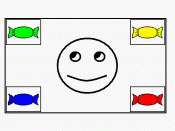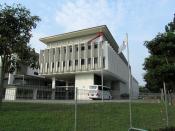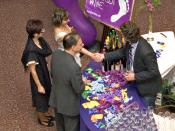Aim:
Do autistic children have a theory of mind?
Method:
Laboratory experiment
Sample:
There were 3 groups:
20 autistic children
14 Downs syndrome
27 clinically normal
Procedure:
A simple scenario is acted out using 2 dolls, Sally and Anne. First the child is asked which doll is Sally and which doll is Anne. Sally then places a marble in her basket and leaves; Anne then takes the marble and places it in her box. Sally then returns. The child is then asked four questions:
- The naming question (to check they can distinguish between the 2 dolls.)
- The belief question (the critical question to test theory of mind: where will sally look for her marble?)
- The reality question (where is the marble really?)
- The memory question (where was the marble to start with?) this is used to to check that the child was not simply guessing the answer to the critical question.
Results:
All the participants answered the naming, reality and memory questions accurately.
Belief Question-
Group Not answering belief question correctly
Autistic 4/20
Downs 12/14
Clinically normal 23/27
Conclusions:
The results quite clearly show that the majority of autistic children were unable to answer the belief question correctly, The 16 that got the answer wrong all pointed to where the marble really was rather than where Sally originally left the marble.
Discussion/Evaluation:
The results also suggest that age had no effect on the children's ability to answer the belief question and neither did intelligence (the Downs children gave correct answers to this question despite having very low intelligence.
Therefore we can evaluate that the autistic children were unable to appreciate the difference between their own knowledge and the dolls. This is an inability to represent mental states; therefore they cannot predict the behavior of others.


